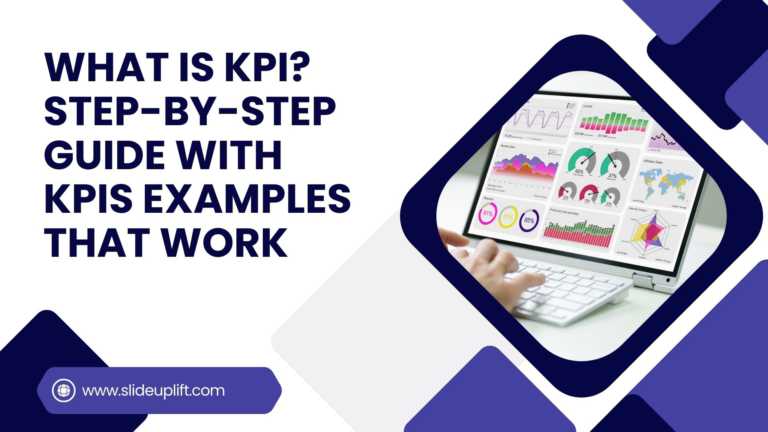Traditional Vs. Agile Project Management: Key Differences
The debate between Agile and Traditional methodologies has been ongoing in every business size. Each approach comes with principles, practices, and philosophies catering to different project requirements. Traditional and Agile methods are sometimes pitted against one another.
Project management is successful when teams collaborate effectively, exceed client expectations, and adjust and manage resources effectively. It also involves identifying and balancing the project’s scope, time, cost, quality, and resources. In this blog post, we’ll delve into the key differences between Agile and Traditional project management and discuss the benefits of each approach.
What is Traditional Project Management?
Traditional project management is often referred to as the Waterfall model. This methodology places a significant emphasis on linear processes, meticulous documentation, thorough upfront planning, and the prioritization of tasks. Despite its well-defined structure, the traditional approach grapples with challenges from variable time and budget constraints. Traditional project management typically includes 5 phrases: Initiation, Planning, Execution, Monitoring and Closure.
Benefits of Traditional Project Management
- Clearly defined objectives
- Controllable processes
- Clear documentation
- More accountability
The traditional methodology proves less suitable for intricate workflows, where the interdependence of various components contributes to a comparatively higher failure rate of around 21%, in contrast to the 8% failure rate observed with the more adaptive Agile approach.
What is Agile Project Management?
Agile Project Management is a relatively contemporary method of project management. Agile is a broad software development strategy. Agile is an iterative approach in which projects are broken into shorter sprints. It strongly emphasizes cooperation, communication, task timeboxing, and the ability to adjust to change as soon as feasible.
Agile Project Management emphasizes collaboration, adaptability, and customer satisfaction positions. It has a valuable approach for complex, uncertain projects and a need for rapid, incremental progress. Scrum and Kanban are two of the most widely used Agile frameworks. Visualizing your workflow and tasks on a Kanban board allows you better to understand your operations and an overview of your workload.
Benefits of Agile Project Management
- Flexible prioritization
- Early and predictable delivery
- Predictable costs and schedules
- Improves quality
- More transparency
Agile methodology is gaining popularity as compared to traditional methodology. Substantial distinctions between traditional and Agile project management methodologies still exist.
Difference Between Agile vs Traditional Project Management
Understanding the differences between Agile and Traditional Project Management is essential for selecting the most appropriate approach. Let’s overview the key differences between Agile project management vs traditional project management across various dimensions:
- Flexibility
- Transparency
- Scope for Feedback
- Project Complexity
- Customer Satisfaction
- Ownership and Accountability
1. Flexibility
The Agile Project Management methodology is far more flexible than the traditional way. Agile project managers do not believe in following a fixed framework. Traditional or waterfall Project Management, on the other hand, takes a top-down strategy. This implies you won’t be able to make any significant adjustments as more information comes in, without disrupting the dependencies or outcomes.
2. Transparency
Every decision and plan in Agile Project Management is transparent. The Agile technique allows team members to comprehensively evaluate the work progress and make educated decisions by planning, evaluating, and testing a product. In the Traditional Project Management technique, the project manager makes all major decisions with only a few senior members. Other team members cannot view the progress in the form of deliverables from beginning to end.
3. Scope for Feedback
The rigid structure of the waterfall method leaves little scope for feedback, any more than pre-planned feedback cycles. This implies that unexpected turns during the project and new information that arises as the project progresses are hard to incorporate into the planning process. The Agile strategy, on the other hand, allows you to take regular input from the various stakeholders. Continuous feedback can assist you in producing better outcomes and delivering high-quality outcomes on time.
4. Project Complexity
Agile Project Management is ideal for complex projects. The Agile method is ideal if your project stages are interdependent or have interconnected phases. Regular interjections and adjustments aid in the reduction of complexity and requirement ambiguity. Traditional Project Management cannot handle complicated projects with unclear requirements and complex tasks. The waterfall method is better suited to simpler or smaller undertakings.
5. Customer Satisfaction
Customers are extremely important in the Agile framework. Agile focuses heavily on customer engagement by soliciting feedback after each iteration. The output is sent to end-users continually in Agile. As a result, end-users can contribute significant ideas and make the project process highly collaborative. Traditional Project Management focuses on following a strict plan and meeting project requirements. Due to this, customer involvement takes place either at an early stage or in the end. Agile, therefore, scores in maintaining customer engagement and increasing satisfaction.
6. Ownership and Accountability
Ownership and responsibility are another reason developers and managers choose Agile project management over traditional project management. In Agile, each team member is responsible for the project and has ownership of it. Everyone on the Agile team has an equally vital part in completing a project on time.
In traditional project management, on the other hand, the project manager is usually entrusted with the ownership of the project. Customers can be involved in the planning stage, but their participation ends when the strategy is implemented.
Differences Between Agile And Traditional Approach
| Agile Project Management | Traditional Project Management |
| Iterative and adaptive planning with frequent reassessment and adjustments based on feedback. | Comprehensive upfront planning with a fixed and detailed project plan at the beginning. |
| Divided into small, manageable iterations or sprints. | Follows a linear and sequential structure, often called the Waterfall model. |
| Embraces changes in requirements even late in the development process. | Changes to requirements are challenging to accommodate once the project has started. |
| Customers are involved from the time work is being performed. | Customers get involved early in the project, but not once the execution has started. |
| Delivers increments of the product at the end of each iteration, allowing for quicker releases. | Delivers the entire product at the end of the project timeline. |
| Allows for reprioritization and reallocation of resources based on changing project needs. | Resources are allocated based on the predetermined project plan with minimal flexibility. |
| Integrates risk management into iterative cycles, addressing risks continuously. | Primarily focuses on risk management during the planning phase. |
| The Scrum master facilitates, and the team does the estimation. | The project manager provides estimates and gets approval from the PO for the entire project. |
| Provides control through regular reviews and adjustments during iterative cycles. | Relies on a more rigid project plan, with control exercised through adherence to the predetermined schedule. |
| Ideal for projects with evolving requirements, uncertainty, and a need for rapid, incremental progress. | Suitable for projects with stable and well-defined requirements where predictability and comprehensive planning are critical. |
The specific needs and limitations of the project often determine which option is best. While traditional project management works better for projects with stable conditions, Agile project management is best suited for initiatives with high degrees of uncertainty.
What Are The Similarities Between Agile and Traditional Project Management?
While Agile and Traditional approaches are distinct, they share some similarities. Both methods have a defined project charter, aim, schedule, and budget and need a team to work together. Here are some common aspects:
- Both aim for successful project outcomes aligned with stakeholder expectations.
- Efficient allocation of personnel, time, and budget is crucial in both approaches.
- Identifying, assessing, and managing risks is a common priority.
- Clear and open communication is emphasized in both methodologies.
- Both prioritize delivering a high-quality end product or service.
- Both involve recording project decisions, requirements, and progress.
- Both follow a life cycle involving initiation, planning, execution, monitoring, and closing.
- Both ultimately strive for customer satisfaction, adapting engagement styles accordingly.
- Collaboration among team members is recognized as essential in both approaches.
ALSO READ: Best Project Management PowerPoint Templates
How to Choose Between Agile and Traditional Project Management?
Choosing between conventional and Agile project management depends on factors like company culture, team distribution, and project complexity. If an organization is wary of empowering distributed teams, Agile may not be suitable; Waterfall is effective for simpler, short-term projects. Agile excels in complexity but requires trained resources. Companies with an empowering mindset often favor Agile. The decision, influenced by company culture, project nature, scale, and resources, lacks a one-size-fits-all solution.
Assessing Agile versus Traditional Project Management involves considering project size, complexity, stakeholder involvement, industry standards, and team expertise. While Agile suits dynamic projects, predicting timelines and costs may be challenging. Traditional Project Management offers clarity but struggles with adaptability. Organizations often opt for a hybrid approach or choose the methodology aligning best with project needs and organizational culture.
When considering traditional versus Agile project management approaches, it is important to weigh the differences and similarities of each. Traditional project management follows a linear, sequential process that focuses on detailed planning and documentation. This approach works well for projects with clear requirements and stable environments.
On the other hand, Agile project management emphasizes flexibility, collaboration, and iterative development. It is ideal for projects with evolving requirements and dynamic environments. Ultimately, the choice between traditional and Agile project management depends on the specific needs and characteristics of the project at hand.
FAQs
-
What is the main difference between Agile and Traditional Project Management?
Agile is an iterative and adaptive approach, focusing on flexibility and continuous collaboration. Traditional Project Management, often using the Waterfall model, follows a linear and sequential structure with detailed upfront planning.
-
Why is Agile better than other methods?
Agile is for dynamic projects with evolving requirements, high complexity, and a need for quick adaptations. It’s ideal when continuous collaboration and customer involvement are essential. Agile is also suitable for varying-size projects, especially those with uncertainty and evolving requirements.
-
Can I use both Agile and Traditional Project Management in the same project?
Yes, organizations often adopt a hybrid approach, known as “Agile-Waterfall Hybrid,” combining elements of both methodologies based on the specific needs of different project phases.













